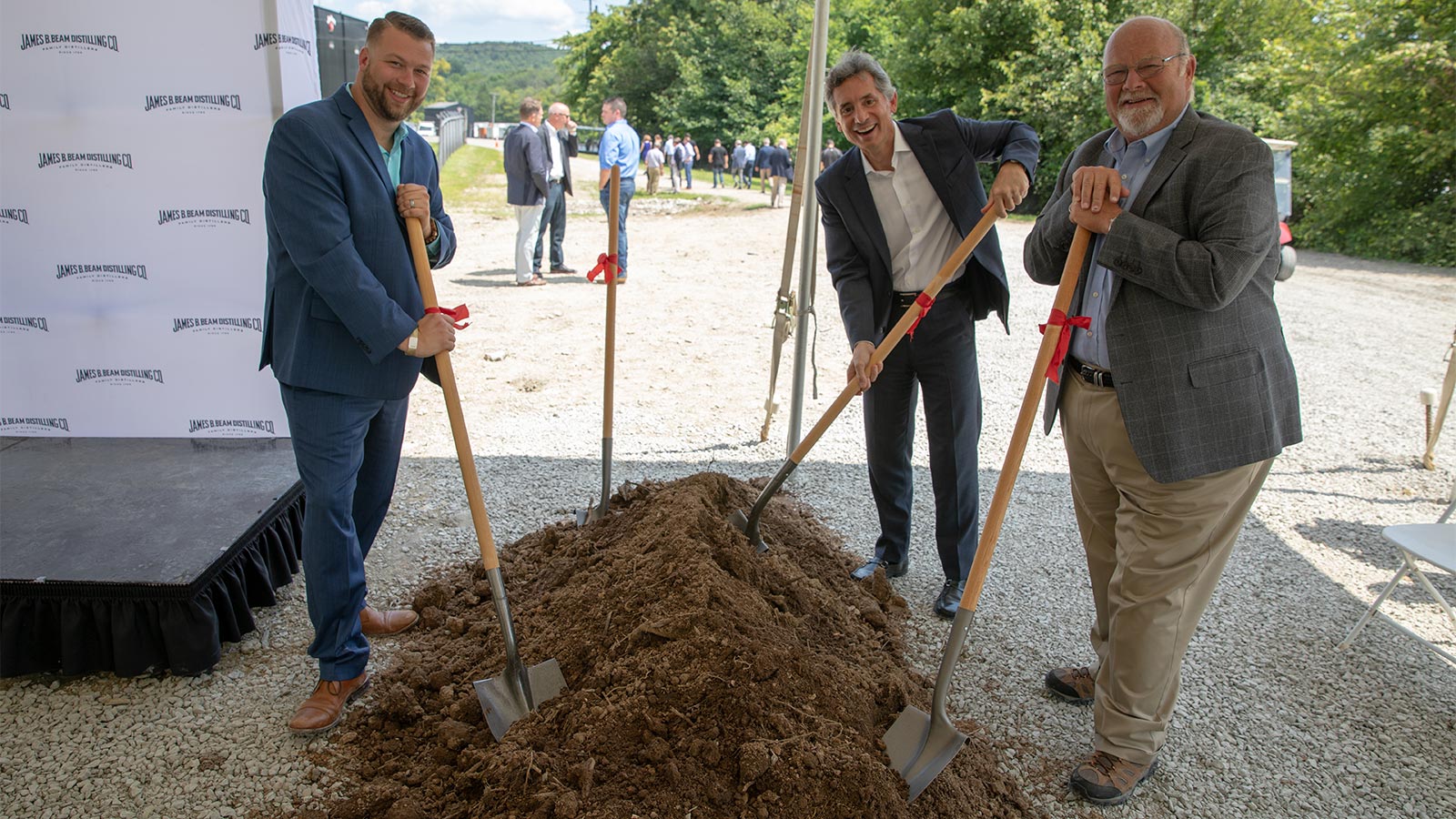
Although it already churns out millions of gallons of whiskey a year, Jim Beam parent company Beam Suntory is building a new distillery on a much smaller scale at its Clermont, Kentucky site, part of a $60 million investment that also includes rebranding as the James B. Beam Distilling Co. and overhauling its visitor experience. The Fred B. Noe Craft Distillery—named after the seventh-generation Jim Beam master distiller—will serve as a production facility for exploring new fermentation and distillation techniques, which could potentially result in some exciting new whiskeys from the eminent American distiller.
“If we hit on a mashbill or a fermentation style or something that brings some new flavor profile that we’re looking for, we can ramp it up to our big distillery for a bigger production run,” Noe says. “The scale of our big distillery does not leave us the opportunity to try small runs on anything,” because of its massive 45,000-gallon fermenters. “That’s a lot for an experiment. This [smaller distillery] will allow us to try new things that we haven’t tried before.” The Fred B. Noe distillery will have a capacity of roughly 1.2 million proof gallons a year—by way of comparison, Whisky Advocate estimates that Jim Beam’s Booker Noe Distillery in Boston, Kentucky and the distillery in Clermont together crank out over 25 million proof gallons annually. (The company would not provide information about these distilleries’ capacity.)
Beam Suntory says that the Fred B. Noe distillery will also become the home of Jim Beam’s Small Batch Collection, primarily its Booker’s and Baker’s brands, although it hasn’t clarified what that means in production terms. It will also be the base for Little Book, the experimental blended whiskey, created by eighth-generation distiller Freddie Noe, that has twice been named in the Whisky Advocate Top 20. But the distillery’s real potential is as a testing ground for ideas. One experiment Noe is mulling over involves five-day fermentation. “A real slow fermentation to kind of go back to maybe the way bourbons were made 50, 60 years ago,” he says. “We can play with it and see. Does it affect the yields after fermentation? Does it affect the flavor?” Another potential trial could involve exploring how the amount of yeast added to fermenters affects flavor. “It’s going to be an open book,” he adds.
Beam Suntory broke ground on the new craft distillery on July 25 as part of a larger expansion of the Clermont complex, rebranded as the James B. Beam Distilling Co.—a nod to the company’s name following the repeal of Prohibition. Noe expects the new distillery to be up and running by 2021. Alongside it, Beam Suntory plans to revamp its visitor facilities to offer bourbon enthusiasts “a more in-depth dive into how Beam bourbon is made,” Noe says. “You’ll be able to get right in there and see, smell, feel, touch” all the parts of the whiskey-making process.
There’s a higher education component to the expansion as well, as Beam Suntory recently donated $5 million to the University of Kentucky to establish the James B. Beam Institute for Kentucky Spirits. Designed in partnership with the Kentucky Distillers’ Association, it aims to train a fleet of future distillers for success in the spirits industry. Some innovation at the new facility could involve working with the university’s chemists to “break down the intricacies of bourbon,” Noe says, including looking at how various grains can produce different flavors.
Noe admits that the revelation the new facility was named after him left him slightly stunned. “It’s a huge honor,” he says. As for calling the distillery “craft,” Noe believes the label is fitting, given the facility’s purpose. “It’s all about learning, and using it to help our big production of bourbon. I think it’s just cool to watch, and to try new things.”






